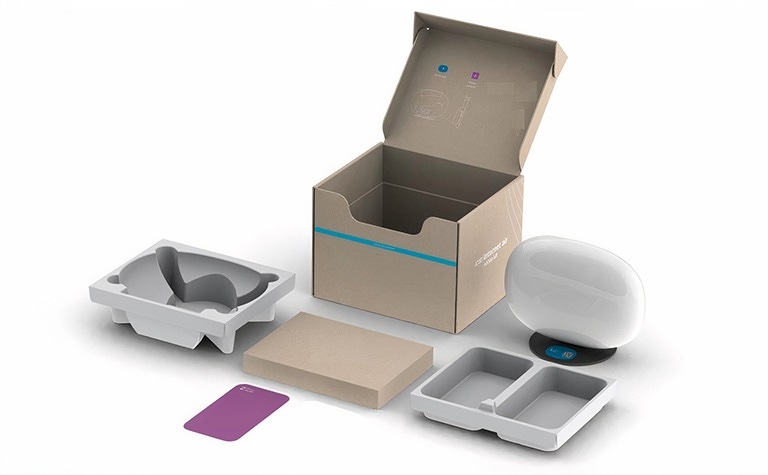AT&T doubles 'Internet Air' subscriber tally in Q1
AT&T tacked on 110,000 'Internet Air' subs in Q1 2024, extending its total to 200,000. After an initial focus on the consumer segment, AT&T recently expanded the fixed wireless access product to small and midsized businesses.

AT&T's fixed wireless access (FWA) product, Internet Air, is being used in a limited, targeted way. But the relatively new offering is seeing some momentum in the early going.
AT&T added 110,000 Internet Air subscribers in the first quarter of 2024, ahead of the 67,000 added in the prior period, ending the quarter with more than 200,000. New Street Research expects Internet Air to hit a peak of 180,000 subscriber adds per quarter by late 2025.
AT&T launched the FWA product commercially last August, for $55 per month (or $35 per month when it's bundled with AT&T's mobile service). The consumer offering is available in parts of 95 markets.
After an initial focus on the consumer segment, AT&T began to expand access to small and midsized business customers last month, viewing it as a national offering.
"We believe [Internet Air] is a durable national play with businesses because it's able to serve as a reliable 5G-powered, primary Internet connection where fiber is not available, in remote locations, where temporary access is needed, or with small and medium businesses that don't require always-on video streaming," John Stankey, AT&T's CEO, said Wednesday on the company's Q1 2024 earnings call.
Stankey also reiterated that FWA will remain a targeted option for AT&T. The product will continue to be used to "catch" DSL customers as AT&T retires its copper footprint, to retain some of those DSL customers in areas where AT&T is upgrading its copper networks to fiber, and in select markets where mobile penetrations are low and AT&T's wireless spectrum position is high.
"We'll use it as a bridging or hold strategy for those customers that are high value to us," Stankey said.
But Stankey stressed again that AT&T won't use FWA as aggressively as two of its wireless rivals – T-Mobile and Verizon – and that fiber will continue to be where AT&T concentrates its investments.
Fiber base expands to 8.6 million subs
AT&T has built fiber to more than 27 million locations and plans to build fiber to about 30 million locations by 2027. It is also targeting about 1.5 million locations outside its legacy fiber wireline footprint via the Gigapower joint venture with BlackRock.
AT&T added 252,000 fiber subscribers in Q1, off from the 272,000 added in the year-ago period. However, Q1 was the 17th-consecutive quarter in which AT&T added 200,000 or more fiber subs. The Q1 result also was in-line with company expectations that it would add about 250,000 fiber subs per quarter.
AT&T ended Q1 with 8.6 million fiber subs, up 14.3% year-over-year. Fiber average revenues per user (ARPU) rose 4.1%, to $68.61.
The company's DSL footprint continued to melt down as it shed 19,000 DSL customers, ending Q1 with 191,000.
With DSL and other non-fiber customers included, AT&T lost 70,000 wireline broadband subscribers in Q1, widened from a year-ago loss of 42,000. With Internet Air included, AT&T added about 55,000 broadband subs in Q1.
Fiber still AT&T's 'fastest growing engine'
Fiber, Stankey said, is AT&T's "fastest growing engine."
He also views AT&T's 5G and fiber buildouts playing into a broader convergence strategy that connects customers in the home and on the go.
"We're even more excited about converging power of 5G and fiber together," Stankey said.
MoffettNathanson analyst Craig Moffett acknowledges that fiber is driving much of AT&T's growth. But he also wonders how well it will fit into AT&T's broader convergence strategy, given that the company's wired footprint covers about 45% of the country, with less than half of that footprint upgraded to fiber.
"That leaves them with a viable convergence offer in less than a quarter of the country," Moffett explained in a research note (registration required) issued after AT&T released Q1 results. "To state the obvious, that's not a viable strategy for a company with a national wireless network."
Financial snapshot
AT&T posted total Q1 revenues of $30.02 billion, down 0.4% year-over-year, and below analyst expectations of $30.54 billion.
Service revenues rose 0.9% to $24.84 billion, and business revenues dropped 7.8% to $4.91 billion.
Consumer wireline revenues, a bright spot, rose 3.4% to $3.35 billion. Fiber revenues surged 19.5% to $1.7 billion.
About the Author(s)
You May Also Like












